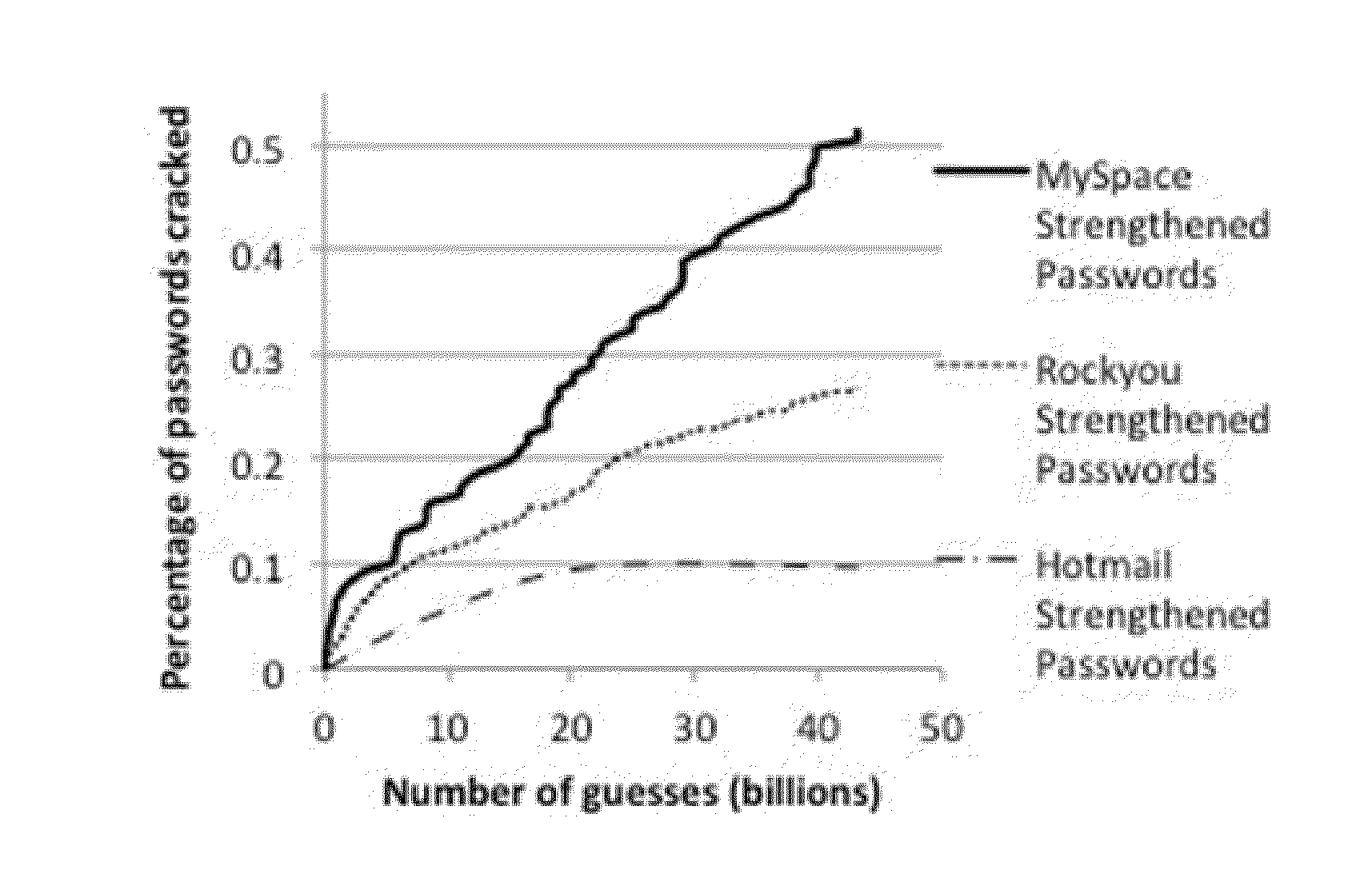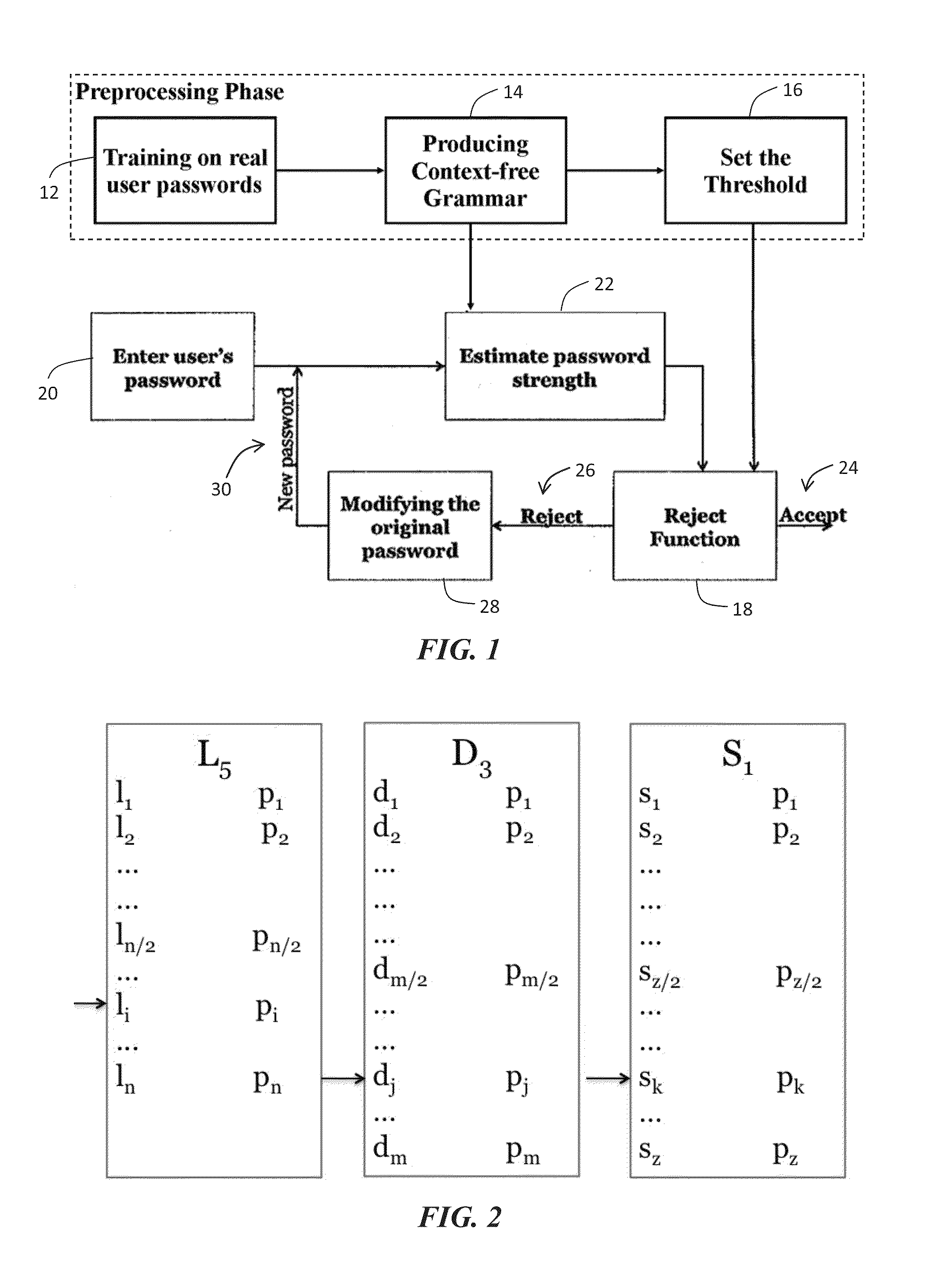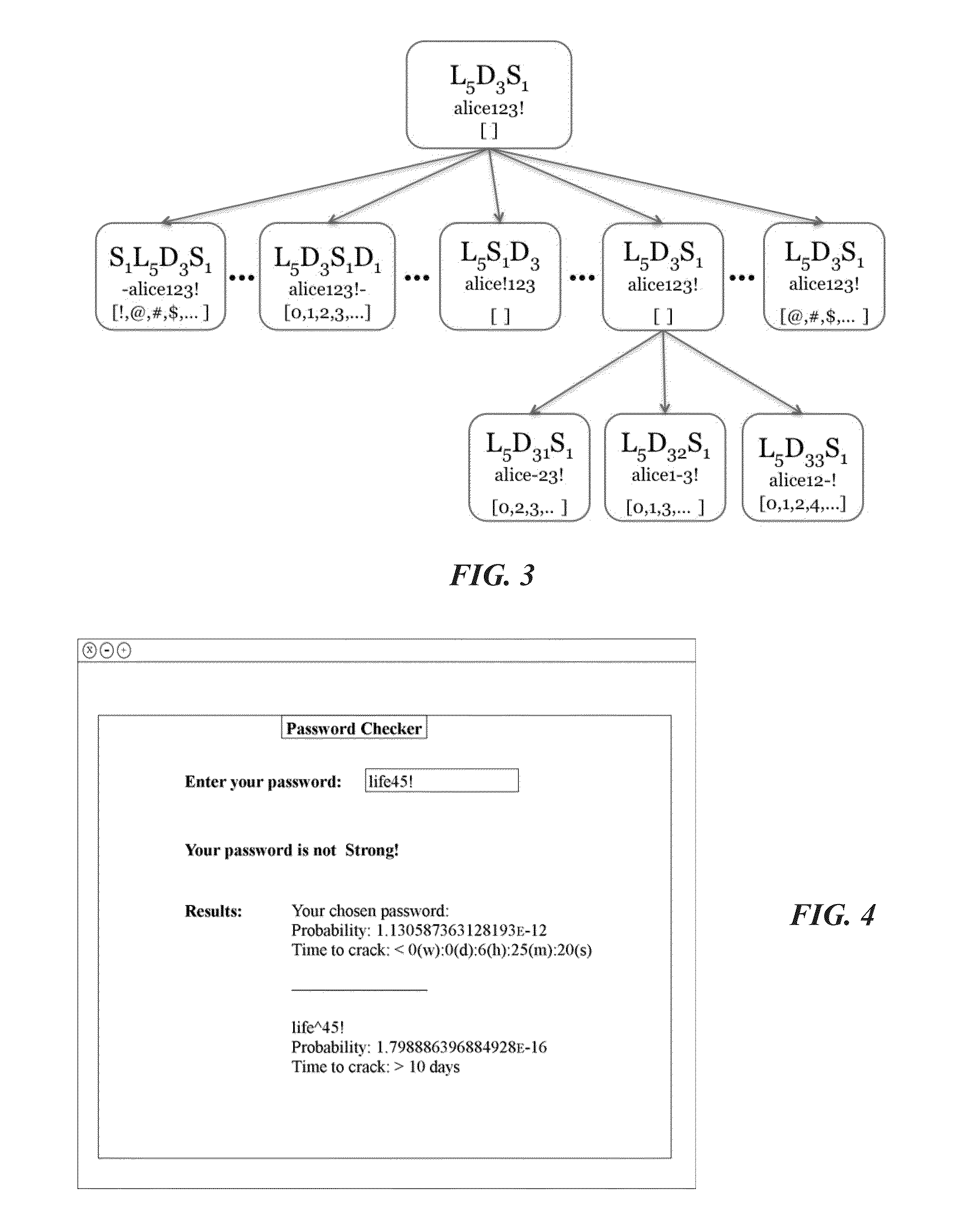System and methods for analyzing and modifying passwords
a password and system technology, applied in the field of password analysis and modification, can solve the problems of defeating the purpose of having a password that can easily be remembered, unable to guarantee the accuracy of passwords, and most users do not have the information to ensure, so as to increase the entropy value of context-free grammar and increase the entropy value
- Summary
- Abstract
- Description
- Claims
- Application Information
AI Technical Summary
Benefits of technology
Problems solved by technology
Method used
Image
Examples
example 1
I. Pre-Processing Phase
[0142]a. Training & Context-Free Grammar
[0143]The process of developing certain embodiments of the current invention begins in the pre-processing phase. The system is trained on real-user passwords using the same technique used for training the probabilistic password cracker in U.S. patent application Ser. No. 13 / 547,779. After training, the real-user passwords are modeled into a context-free grammar with associated probabilities for each pre-terminal set to the frequencies of the different patterns found in them.
[0144]b. Setting the Threshold
[0145]The threshold is a probability value t that assumes that passwords with probability smaller than t are sufficiently strong, and passwords with probability larger than t are not sufficiently strong. The strength of a proposed password is related to the time it takes for an attacker to crack that password. Examples of ways to attack a password include brute force attacks and dictionary attacks. However, an assumption ...
example 2
I. Preprocessing and Experiment Setup
[0180]The effectiveness of the novel password analysis and modification system was tested on several sets of revealed passwords. The analysis component of the system essentially is the password checker. The grammar of this password checker is used to set the thresholds between strong and weak passwords, and analyze the user-proposed passwords. Two password-cracking approaches were used to try to break passwords, including those that had been identified as weak and made strong by the current system.
[0181]Three lists of revealed passwords were obtained for the experiments. The first list was the RockYou password list (A. Vance, “If your password is 123456, just make it hackme,” New York Times, January 2010, http: / / www.nytimes.com / 2010 / 01 / 21 / technology / 21password.html), which was released in December 2009 and contains 32 million passwords. Two million random plain text passwords were used from this list for the experiments. The second list was a MyS...
PUM
 Login to View More
Login to View More Abstract
Description
Claims
Application Information
 Login to View More
Login to View More - R&D
- Intellectual Property
- Life Sciences
- Materials
- Tech Scout
- Unparalleled Data Quality
- Higher Quality Content
- 60% Fewer Hallucinations
Browse by: Latest US Patents, China's latest patents, Technical Efficacy Thesaurus, Application Domain, Technology Topic, Popular Technical Reports.
© 2025 PatSnap. All rights reserved.Legal|Privacy policy|Modern Slavery Act Transparency Statement|Sitemap|About US| Contact US: help@patsnap.com



